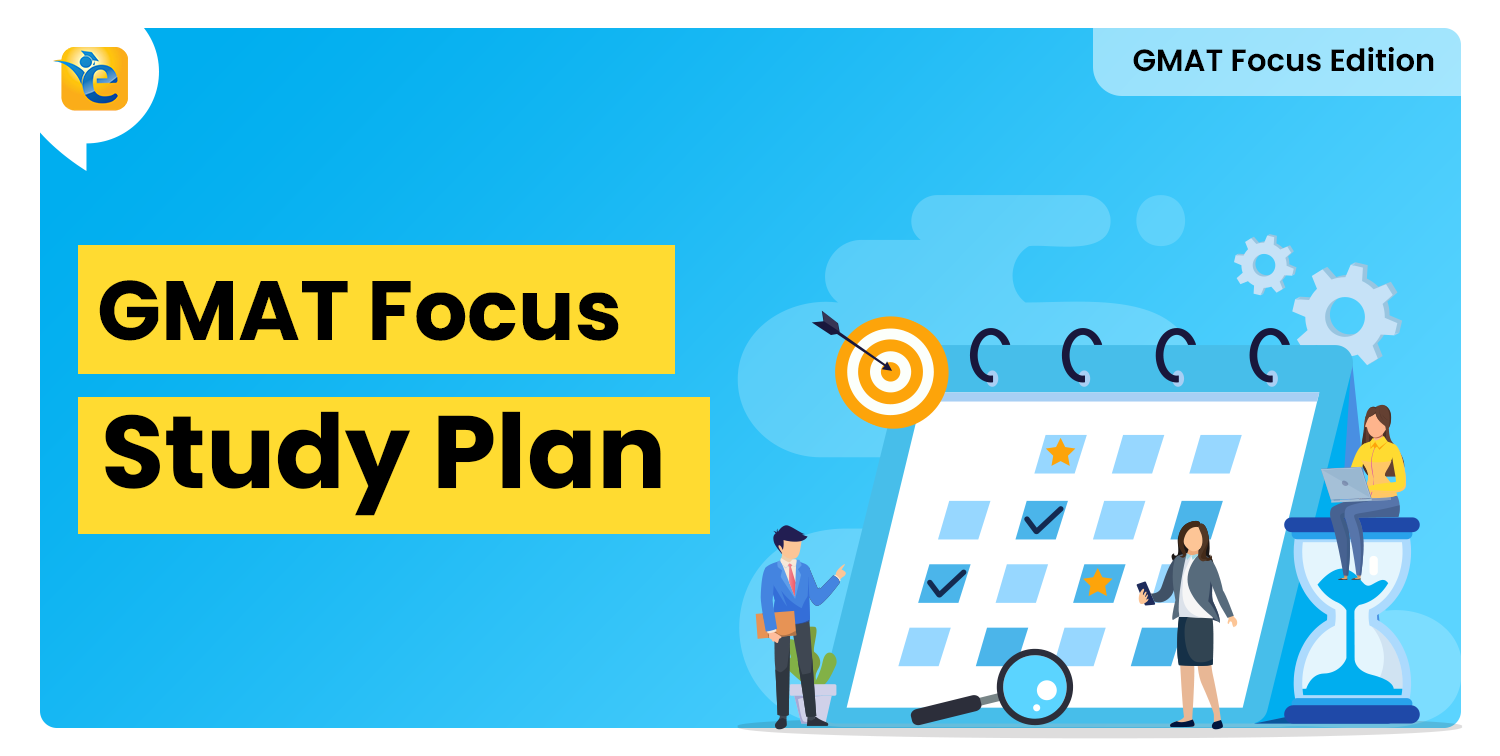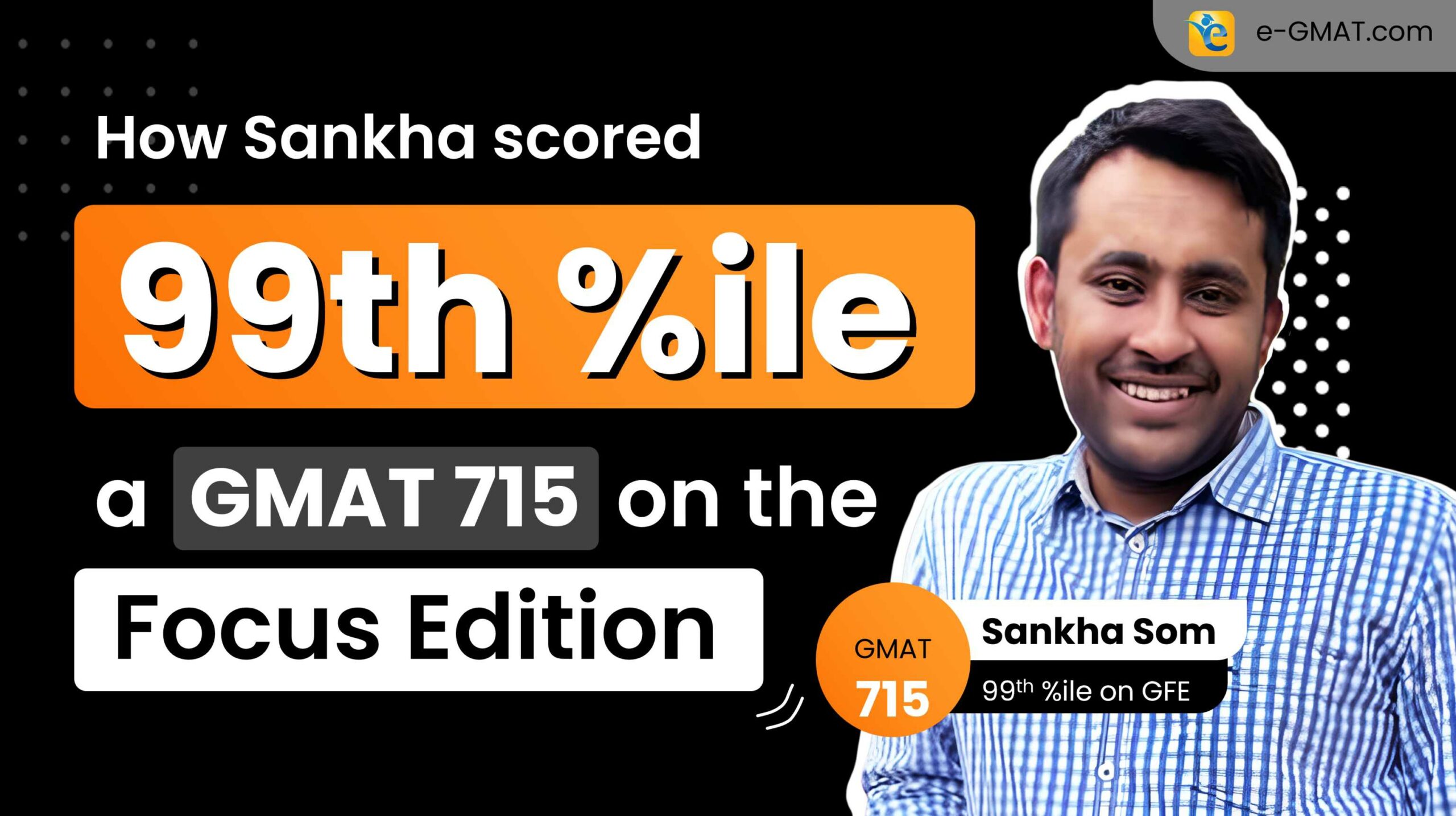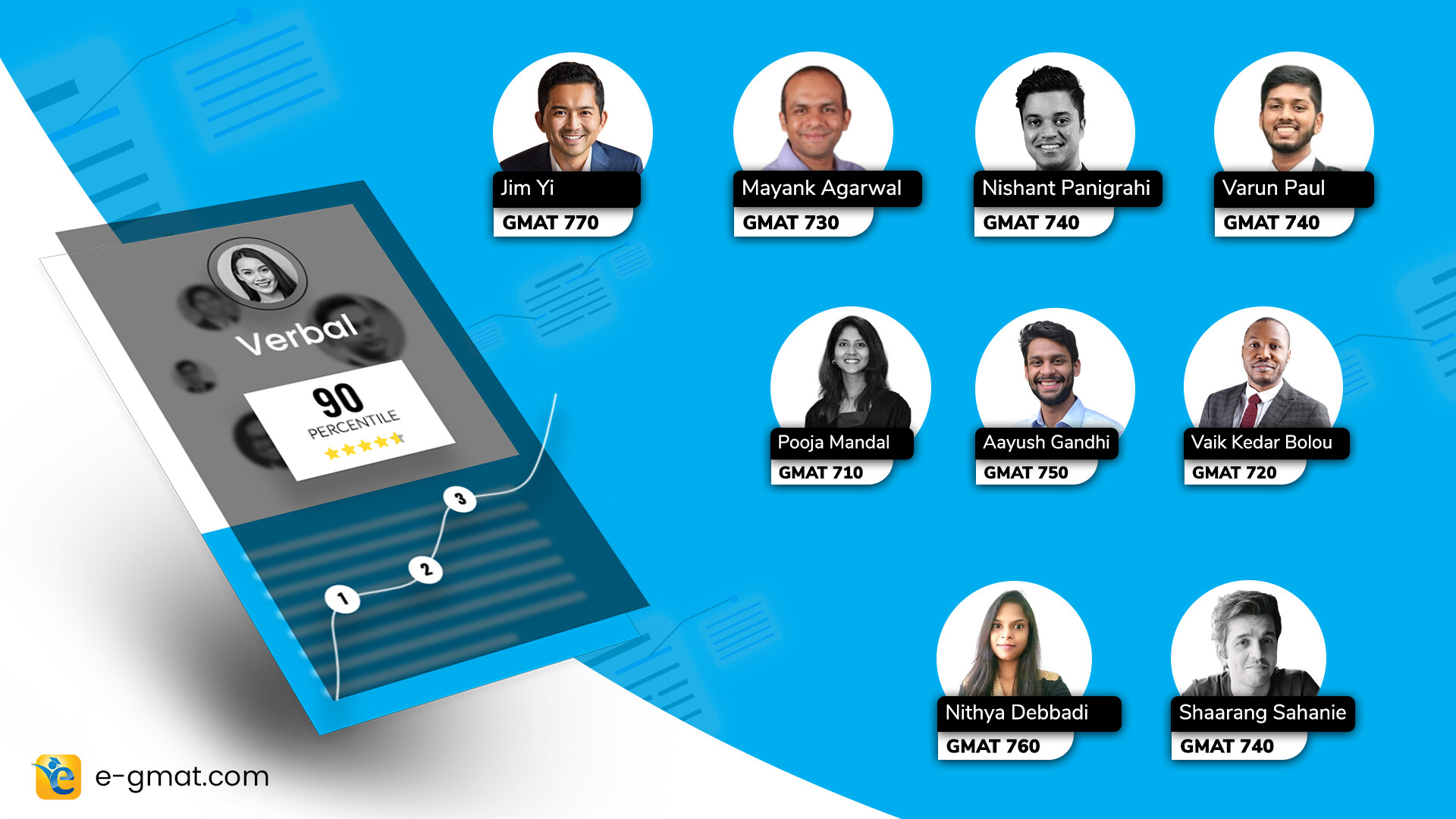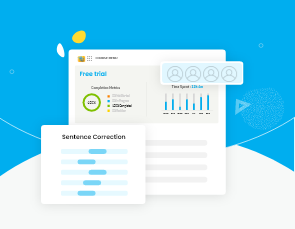You’ve taken the GMAT once. You scored somewhere between 575 and 625 – a respectable score, but not quite what your dream business school requires. You know you have the potential to achieve a 700+ GMAT score but the question haunts you: How do I strategically improve from here?
The answer isn’t about working harder – it’s about working smarter. After analyzing successful GMAT journeys and the latest scoring data, we’ve identified three distinct strategies that can help you break through to the 705+ level. The key is choosing the right strategy based on your unique strengths and weaknesses.
Key Takeaways for Achieving a 705 GMAT Score:
- Score flexibility: GMAT Focus scores are based on the sum of your three section scores, so you can strategically focus on your strongest areas rather than excelling equally everywhere.
- Strategic approach: Choose to perfect one section or excel in two, or balance all three based on your natural strengths.
- Target high accuracy on hard questions: Achieve 80% accuracy on difficult problems for 95th percentile performance—challenging questions determine your score ceiling.
- Discover Your Personalized Path to 705+ GMAT Score
- Choose Your Winning Strategy For Breaking The 700 GMAT Barrier
- Find Your Perfect Strategy Match
- How Hard Is It to Get 700 in GMAT: Setting Realistic Study Goals
- 3 Proven Habits of 700+ GMAT Scorers
- Your Roadmap to Breaking The 700 GMAT Barrier
- Conclusion: Your 705+ GMAT Score Awaits
- Frequently Asked Questions About Breaking The 700 GMAT Barrier
⭐Ready to Find YOUR Optimal Path to 705+?
Now that you understand scoring flexibility, discover your personalized roadmap in just 10 minutes. Our free Study Planner analyzes 212+ possible paths from your current score to your target, giving you the exact timeline, section priorities, and daily targets you need.
Discover Your Personalized Path to 705+ GMAT Score
Before diving into preparation, you need to understand one game-changing concept: your GMAT Focus Edition score depends on the sum of your three section scores. Whether you score Q90/V85/DI78 or Q84/V84/DI85, if your sum equals 253, you’ll receive the same total score.
The Sum of Scores: Your Strategic Advantage
Here’s what you need to know in simple terms:
- To achieve a 655 (91st percentile): Sum of 247
- To achieve a 675 (95th percentile): Sum of 250-251
- To achieve a 695+ (98th+ percentile): Sum of 253+
✅ Refer to this look-up table and get the Sum of Scores corresponding to your Target GMAT Focus score- GMAT Focus Study Plan
The beauty of this approach: You don’t need to excel equally in all sections – you just need to reach your target sum through your strengths.
Mastering the GMAT: VERBAL EXCELLENCE TO 725
Discover how Avnit leveraged his Verbal strength to Score 725
⭐ Game-Changer: Pre-thinking strategy that eliminated wrong answers with certainty!
Choose Your Winning Strategy For Breaking The 700 GMAT Barrier
Now that you understand scoring flexibility, let’s explore three proven paths to achieving a 700+ GMAT score. Each strategy has helped students achieve elite scores, but the right choice depends on your unique profile.
Strategy #1: Perfection in One Section
Best for: Students with a clear strength who can push one section to 95th+ percentile
How it works: Achieve near-perfect performance in your strongest section while maintaining solid scores (85th-95th percentile) in others.
⭐ Success Story: Aayush’s Path to 715
- Background: Engineering student with strong quantitative foundation
- Strategy: Perfection in Quant + Strong performance elsewhere
Final Scores: Q90 (100th percentile) / V83 / DI84 = 715 - Key Insight From Aayush: “Once you’re accustomed to higher difficulty questions in practice, the official exam feels manageable”
⭐Start Your 700+ Journey Like Aayush Did
Get immediate access to the same high-quality resources that helped Aayush achieve his 715 score:
- 400+ practice questions to build accuracy on hard problems
- Full adaptive mock test to baseline your current performance
- 15+ hours of video lessons updated for GMAT Focus Edition
- AI-driven feedback to identify your specific weaknesses
Target Example for 705:
- Your Strongest Section: 89-90 (97th-100th percentile)
- Other Sections: 82-84 each (84th-95th percentile)
| DI Score (Percentile) | Verbal Score (Percentile) | Quant Score (Percentile) | Sum of Scores | GMAT Score (Percentile) |
| 82 (93%ile) | 84 (90%ile) | 89 (97%ile) | 255 | 705 (98%ile) |
| 82 (93%ile) | 89 (99%ile) | 84 (85%ile) | 255 | 705 (98%ile) |
Mastering the GMAT: Achieving a 705 with a Perfect Quant Score
Learn how Aayush achieved an impressive 715 on the GMAT Focus Edition, scoring a perfect Q90 (100th percentile) and excelling in Data Insights with a DI84 (97th percentile).
⭐ Uncover Aayush’s methodical approach to test preparation, emphasizing detailed error logs and pattern analysis.
Strategy #2: Excellence in Two Sections
Best for: Students who can achieve strong performance in two areas with moderate effort in the third
How it works: Develop deep expertise in two sections while ensuring the third meets minimum requirements.
⭐ Success Story: Sanjana’s Path to 685
- Background: Balanced foundation with improvement potential in two areas
- Strategy: Excellence in Verbal + Quant, maintain Data Insights
Final Scores: Q87 / V85 / DI84 = 685 - Key Insight From Sanjana: “Quality over quantity – solving 100 good questions thoroughly beats solving 1000 questions superficially”
Target Example for 705:
- Two Strong Sections: 85-87 each (90th-95th percentile)
- Third Section: 82-84 (80th-85th percentile)
| DI Score (Percentile) | Verbal Score (Percentile) | Quant Score (Percentile) | Sum of Scores | GMAT Score (Percentile) |
| 82 (93%ile) | 86 (97%ile) | 87 (94%ile) | 255 | 705 (98%ile) |
| 85 (98%ile) | 87 (98%ile) | 83 (81%ile) | 255 | 705 (98%ile) |
Mastering the GMAT: Excellence in two sections to 705
Discover how Thannuh excelled in Data Insights and transformed his Verbal ability from the 20th to 90th percentile.
⭐ Gain invaluable advice from someone who overcame significant challenges to achieve a 705 score
Strategy #3: Balanced Approach
Best for: Students with no clear weakness who prefer consistent improvement across all sections
How it works: Treat all three sections equally, aiming for steady performance that minimizes risk.
Target Example for 705:
- All Sections: 84-86 each (85th-95th percentile consistently)
| DI Score (Percentile) | Verbal Score (Percentile) | Quant Score (Percentile) | Sum of Scores | GMAT Score (Percentile) |
| 84 (97%ile) | 86 (97%ile) | 85 (88%ile) | 255 | 705 (98%ile) |
| 85 (98%ile) | 84 (90%ile) | 86 (91%ile) | 255 | 705 (98%ile) |
✅ Discover how Harsh jumped 110 points to score 705 (99th percentile in Data Insights) and saved 50+ hours using proven e-GMAT strategies.
Advantages:
- No single section can derail your score
- Builds comprehensive GMAT skills
- Provides flexibility on test day
➡️ Access GMAC’s official GMAT Focus prep resources including free 6-Week Study Planner, 70 real questions, and full-length practice exams using the actual test algorithm.
⭐Which Strategy Fits YOUR Profile Best?
You’ve seen all three proven paths to 705+:
- Perfection in One (89-90 in strongest + 82-84 in others)
- Excellence in Two (85-87 in two + 82-84 in third)
- Balanced Approach (84-86 across all sections)
Our Study Planner analyzes your current scores and recommends the optimal strategy for your specific situation, plus creates your complete roadmap.
Find Your Perfect Strategy Match
Quick Assessment Questions:
- Analyze Your Baseline: What’s your highest section percentile vs. lowest?
- Consider Your Background: Do you have domain expertise in any area?
- Assess Your Timeline: How much time can you realistically commit?
⏩ Strategy Selection
- Choose “Perfection in One” if: You score 85th+ percentile in one section
- Choose “Excellence in Two” if: You score 75th+ percentile in two sections
- Choose “Balanced Approach” if: Your sections are within 10 percentile points of each other
⚡ Measure Your Current Accuracy Levels Precisely
You now know the targets – but where do you stand right now? Our SigmaX Mock provides the exact accuracy breakdown you need:
- ✅ Accuracy by difficulty level (Easy/Medium/Hard)
- ✅ Subsectional ability scores in CR, RC, Arithmetic, Algebra
- ✅ Detailed error pattern analysis
- ✅ Time management insights
How Hard Is It to Get 700 in GMAT: Setting Realistic Study Goals
Once you’ve chosen your strategy, the next step is translating it into specific, measurable targets for your practice sessions. This is where most students stumble—they know their goal percentiles but don’t know what accuracy they need to achieve them.
The Key Principle: Hard Questions Determine Your Ceiling
Think of it like basketball scoring:
- Player A: Makes 85% of free throws (1 point each)
- Player B: Makes 70% of three-pointers (3 points each)
Despite lower accuracy percentage, Player B scores more points. Similarly, on the GMAT, your performance on hard questions matters more than medium questions for reaching high percentiles.
Your Accuracy Targets by Difficulty
For 90th Percentile Ability:
- Hard Questions: 70% accuracy
- Medium-Hard: 80% accuracy
- Medium: 90% accuracy
For 95th Percentile Ability:
- Hard Questions: 80% accuracy
- Medium-Hard: 90% accuracy
- Medium: 95% accuracy
⚠️ Critical Insight: You must first demonstrate high accuracy on medium questions (85%+) to even see hard questions due to the adaptive algorithm.
✅ You can find the entire table that translates the target percentiles into target accuracies in Easy, Medium, and Hard questions-GMAT Focus Study Plan Metrics
Real-World Application: Aayush’s Metrics Journey
Let’s see how Aayush translated his “Perfection in One” strategy into concrete daily targets:
- Initial State (Q87): Strong knowledge but imprecise execution
- Target State (Q90): Required specific accuracy thresholds
His Winning Metrics:
- Hard questions: Improved from 73% → 87% accuracy
- Medium-Hard questions: Achieved consistent 95%+
- Eliminated consecutive error chains
- Time management: Under 2 minutes per standard question
✅ Quick Check: In your recent practice, what’s your accuracy on hard questions in your strongest section? This predicts your score ceiling.
✅Ready to Put Your Strategy Into Practice?
You now know your target strategy and exact accuracy goals. Before learning the proven implementation habits, get the essential tools to start practicing immediately:
- 400+ Practice Questions – Build accuracy on medium and hard problems
- Free Adaptive Mock Test – Baseline your current ability levels
- 15+ Hours Video Lessons – Master concepts efficiently
- AI-Powered Analytics – Track your accuracy by difficulty level
3 Proven Habits of 700+ GMAT Scorers
After analyzing thousands of successful students, three practices consistently separate those who break 700+ from those who plateau. Focus on these core habits rather than trying to implement everything at once.
Habit #1: Allocate Realistic Study Time
The Reality Check: Most 700+ scorers invest 100-200 hours, but it depends on your starting point.
Time Investment By Starting Level:
Starting Below 50th Percentile (Score < 565):
- Total Hours: 150-250 hours over 4-6 months
- Weekly Commitment: 12-15 hours
- Focus: 60% concept mastery, 40% practice
Starting 50-70th Percentile (565-605):
- Total Hours: 100-150 hours over 2-4 months
- Weekly Commitment: 10-12 hours
- Focus: 30% concept review, 70% targeted practice
⭐ Pro Tip: Plan for 8-10 hours of study per 10-point improvement. A 50-point jump needs 40-50 focused hours minimum.
✅ Discover your personalized GMAT timeline using our research-backed formula and save up to 120 hours of prep time with strategic study planning at How Long Does It Take to Prepare for the GMAT
Habit #2: Master One Area Completely Before Moving On
The Most Common Mistake: Trying to improve everything simultaneously.
The Proven Approach: Complete mastery of one subsection before advancing.
Why Topic-Switching Hurts:
- Context switching wastes mental energy
- Prevents deep pattern recognition
- Creates shallow understanding across all areas
Implementation:
- Sequence your subsections: Decide on a logical order for tackling GMAT subsections. Starting with either Quant or Verbal before moving to Data Insights often works well.
- Define mastery criteria: For each subsection, establish clear metrics that define mastery. These might include specific accuracy targets for questions of different difficulty levels.
- Stick to the schedule: Resist the temptation to switch topics when you encounter challenging material. Pushing through difficulty in one area is more valuable than avoiding it by switching to something else.
- Use interval learning: Plan brief review sessions of previously mastered material to maintain retention while primarily focusing on your current subsection.
⚠️ Important: This focused approach is particularly important during the initial learning phase of your GMAT preparation. As you get closer to your test date, you’ll naturally transition to more integrated practice that combines different question types, but the foundation should be built through focused, sequential mastery.
Habit #3: Use Data to Drive Every Decision
Track These Essential Metrics:
- Accuracy by difficulty level (most important)
- Time per question trends
- Consecutive error patterns
- Improvement velocity week-over-week
Weekly Analysis Protocol:
- Export performance data from your practice platform
- Identify your top 3 error patterns
- Compare accuracy to targets for each difficulty level
- Adjust next week’s focus based on data gaps
❗ Red Flags in Your Data:
- Accuracy dropping on easier questions
- Time per question increasing over sessions
- Same error types repeating for 2+ weeks
✅ Learn how Soham’s data-driven approach and systematic pre-thinking strategy led to an 80-point jump from 565 to 645 and saved 25+ hours of prep time at GMAT 645: How Data-Driven Strategy Led to an 80-Point Score Jump
The 48-Hour Rule: Within 48 hours of any practice test, create specific action plans for each error:
- Conceptual gap → Review fundamentals + 20 targeted problems
- Process failure → Document correct approach + practice 10 times
- Time pressure → Practice same question type with 20% less time
- Careless error → Create verification checklist
↗️Get These Exact Metrics Automatically Tracked
Stop guessing about your performance. Our SigmaX Analytics Dashboard gives you all the data points mentioned above:
- Accuracy by difficulty level with percentile mapping
- Time per question trends and optimization opportunities
- Consecutive error pattern detection
- Week-over-week improvement velocity tracking
The same analytics system that helped 2,500+ students reach 700+
Your Roadmap to Breaking The 700 GMAT Barrier
The students who break through to 705+ GMAT scores aren’t necessarily smarter—they’re more systematic. Here’s your step-by-step implementation plan:
- Week 1-2: Choose strategy + establish tracking systems
- Week 3-8: Focused subsection mastery with daily metrics
- Week 9-10: Integration practice + mock test intensive
- Week 11-12: Fine-tuning based on error patterns
⏱ Get Your Personalized 12-Week Timeline
This general roadmap is powerful – but YOUR specific timeline is even better. Generate your customized plan that accounts for:
- Your current section strengths and target improvements
- Available study hours per day/week
- Specific subsection progression based on your profile
- Exact milestone dates and interim targets
Takes 10 minutes, saves 120+ hours of study time
ℹ️ Final Success Formula:
Strategic Choice (based on your strengths)
+ Realistic Time Investment (100-200 hours)
+ One-Area-at-a-Time Focus (complete mastery)
+ Data-Driven Adjustments (weekly analysis)
= Your 705+ GMAT Score
Conclusion: Your 705+ GMAT Score Awaits
Remember, students have achieved 99th percentile scores through different paths. Aayush reached 715 by perfecting Quant while maintaining strong performance elsewhere. Sanjana achieved 685 by excelling in two sections. Your path might be different, but with the right strategy, your destination—a 700+ GMAT score—is absolutely achievable.
The difference between where you are now and where you want to be isn’t talent or luck. It’s having a clear strategy, measurable targets, and proven habits for breaking the 700 GMAT barrier. You now have all three.
Your next step: Choose your strategy using the decision framework above, set your accuracy targets, and begin your focused preparation. Your dream business school is waiting.
⚡ Transform Your 700+ Strategy Into Action Today
You have the strategy, targets, and habits. Now get the complete tool kit to execute:
Immediate Access:
- ✅ Personalized Study Plan Tool (worth $500)
- ✅ Full-length Adaptive Mock Test
- ✅ 400+ targeted practice questions with solutions
- ✅ 15+ hours of expert video instruction
- ✅ Live weekend webinars with top instructors
Join 50,000+ students who’ve used these exact resources
Frequently Asked Questions About Breaking The 700 GMAT Barrier
⚡ QUICK ANSWER: Achieving 700+ requires a strategic approach based on your strengths. The key insight is that GMAT Focus scores depend on the sum of your three section scores – you need a sum of 255 to reach 705 (98th+ percentile).
Choose one of three proven strategies:
• Perfection in One Section: Excel in your strongest area (89-90 score) while maintaining solid performance (82-84) in others
• Excellence in Two Sections: Achieve strong performance (85-87) in two areas with moderate scores (82-84) in the third
• Balanced Approach: Consistent performance (84-86) across all sections
Success requires 100-200 study hours, focusing on one subsection at a time until mastery, and tracking specific metrics like accuracy on hard questions (70-80% for elite scores). For detailed guidance on choosing your optimal strategy, refer to the decision framework based on your current percentile performance.
⚡ QUICK ANSWER: A 705 score on GMAT Focus represents the 98th+ percentile, placing you among the top 2% of test-takers globally. This elite score level requires achieving a sum of 255 across your three sections (Quantitative, Verbal, and Data Insights).
To reach this percentile, you need high accuracy on challenging questions – specifically 80% accuracy on hard questions and 90% on medium-hard questions in your target sections. The 98th percentile threshold makes 705+ scores highly competitive for top business schools.
For context on percentile requirements and what sum of scores you need to target, this elite level demonstrates exceptional GMAT performance that significantly strengthens your business school applications.
⚡ QUICK ANSWER: Yes, 705 is an excellent GMAT Focus score, placing you in the 98th+ percentile among all test-takers. This elite score level significantly exceeds the requirements of most top business schools and demonstrates exceptional analytical and reasoning abilities.
A 705 score opens doors to:
• Top-tier MBA programs that typically seek 90th+ percentile candidates
• Competitive scholarship opportunities
• Strong positioning in admissions processes
This score represents a substantial achievement, requiring strategic preparation and mastery of high-difficulty questions. Students who reach this level typically invest 100-200 focused study hours and demonstrate 80% accuracy on hard questions in their strongest sections.
For perspective on target scores for different programs and how to strategically reach this elite level, the 705+ range represents truly outstanding GMAT performance.
⚡ QUICK ANSWER: Preparing for GMAT Focus in one month is feasible for achieving 700+ scores for those who are already at a percentile line above the 85th. For others, the data shows that successful 700+ scorers typically invest 100-200 hours over 2-6 months, depending on their starting level.
Realistic timeline breakdown:
• Starting 50-70th percentile (565-605): 100-150 hours over 2-4 months
• Starting below 50th percentile: 150-250 hours over 4-6 months
• Weekly commitment needed: 10-15 hours minimum
One month allows only 40-60 study hours, which falls well short of the proven requirements. The compressed timeline also prevents proper implementation of the three critical habits: realistic time allocation, complete mastery of one area before moving on, and data-driven adjustments.
For sustainable success, consider a proper study timeline that allows for focused subsection mastery and adequate practice integration.
⚡ QUICK ANSWER: Getting 700+ on GMAT Focus is challenging but achievable with the right strategic approach. It requires reaching the 98th+ percentile, which demands specific accuracy targets: 80% on hard questions and 90% on medium-hard questions in your target sections.
Key difficulty factors:
• Time investment: 100-200 focused study hours
• Technical precision: Must demonstrate mastery of complex analytical reasoning
• Strategic planning: Need to choose optimal approach based on your strengths
• Consistent performance: Requires maintaining high accuracy under time pressure
However, students regularly achieve this level by following proven strategies rather than working harder. Success comes from working smarter – choosing between perfection in one section, excellence in two sections, or balanced improvement based on your profile.
The systematic approach of mastering one subsection completely before advancing, combined with data-driven practice adjustments, makes 700+ an attainable goal for dedicated students.
⚡ QUICK ANSWER: Yes, scoring 700+ in 3 months is achievable for many students, particularly those starting at the 50-70th percentile (565-605 range) or above. This timeline aligns well with the proven study requirements of 100-150 hours over 2-4 months.
3-month success framework:
• Weeks 1-2: Choose strategy and establish tracking systems
• Weeks 3-8: Focused subsection mastery with daily metrics
• Weeks 9-10: Integration practice and intensive mock testing
• Weeks 11-12: Fine-tuning based on error pattern analysis
• Weekly commitment needed: 10-12 hours consistently
This timeline works best when you focus on one subsection at a time until achieving mastery criteria, rather than trying to improve everything simultaneously. The key is reaching specific accuracy targets: 80% on hard questions for 95th percentile ability.
For a detailed 12-week implementation plan and how to track your progress effectively, the 3-month timeline provides adequate time for strategic preparation when executed systematically.
⚡ QUICK ANSWER: For optimal GMAT preparation targeting 700+, aim for 1.5-2 hours of focused study daily, translating to 10-15 hours per week. This sustainable pace allows for the 100-200 total hours that successful 700+ scorers typically invest.
Daily study structure by starting level:
• Below 50th percentile: 2-2.5 hours daily (12-15 hours weekly) over 4-6 months
• 50-70th percentile: 1.5-2 hours daily (10-12 hours weekly) over 2-4 months
Quality over quantity: Focus on deep, concentrated practice rather than marathon sessions. Effective daily sessions should include:
• Targeted practice on one subsection until mastery
• Immediate error analysis using the 48-hour rule
• Tracking accuracy metrics by difficulty level
Important: Avoid cramming or excessive daily hours, which leads to diminishing returns. Consistent, focused daily practice with proper time allocation strategies proves more effective than sporadic intensive sessions for achieving elite scores.
⚡ QUICK ANSWER: The section you should prioritize depends entirely on your individual strengths and chosen strategy. GMAT Focus scoring flexibility means you can reach 705+ through different paths, as long as your three sections sum to 255+.
Strategy selection guidelines:
• Choose Quant focus if: You have engineering/analytical background and score 85th+ percentile currently in Quant
• Choose Verbal focus if: You have strong reading/writing foundation and score 85th+ percentile currently in Verbal
• Choose balanced approach if: Your sections are within 10 percentile points of each other
Example success paths to 705:
• Quant-focused: Q89 (97th) + V84 (90th) + DI82 (93rd) = 255
• Verbal-focused: V89 (99th) + Q84 (85th) + DI82 (93rd) = 255
Use the strategy decision framework to assess your baseline scores. Focus on your strongest area to achieve 89-90 (perfection strategy) or develop two areas to 85-87 each (excellence strategy).
⚡ QUICK ANSWER: Effective practice test analysis follows a systematic approach centered on the 48-hour rule: within 48 hours of any practice test, create specific action plans for each error to drive continuous improvement.
Essential analysis framework:
• Track accuracy by difficulty level: Monitor hard question performance (target 80% for 95th percentile)
• Identify error patterns: Categorize mistakes as conceptual gaps, process failures, time pressure, or careless errors
• Create specific action plans:
– Conceptual gap → Review fundamentals + 20 targeted problems
– Process failure → Document correct approach + practice 10 times
– Time pressure → Practice same question type with 20% less time
Weekly analysis protocol: Export performance data, identify top 3 error patterns, compare accuracy to targets, and adjust next week’s focus based on data gaps.
Red flags to watch: Accuracy dropping on easier questions, increasing time per question, or same error types repeating for 2+ weeks.
For detailed error analysis templates and tracking systems, systematic practice test review drives the targeted improvements needed for 700+ performance.
⚡ QUICK ANSWER: The systematic approach needed for 700+ suggests that structured guidance can be valuable, especially for students who struggle with self-directed study or strategic planning.
Courses provide value when they offer:
• Clear strategy selection based on your diagnostic performance
• Structured progression through subsection mastery (rather than random topic-switching)
• Data tracking systems and error analysis frameworks
• Accountability for the 100-200 hour time investment required
Self-study can work if you can systematically implement the three proven habits: realistic time allocation, complete area mastery before advancing, and weekly performance analysis.
The key insight is that reaching 700+ requires strategic approach and consistent execution rather than just content delivery, whether through courses or self-directed preparation.
You can explore eGMAT’s teaching approach by getting a free Personalized Study Plan from us. We use data from thousands of students to create an OPTIMAL PATH from your current score to your target GMAT score – in just 10 minutes!














